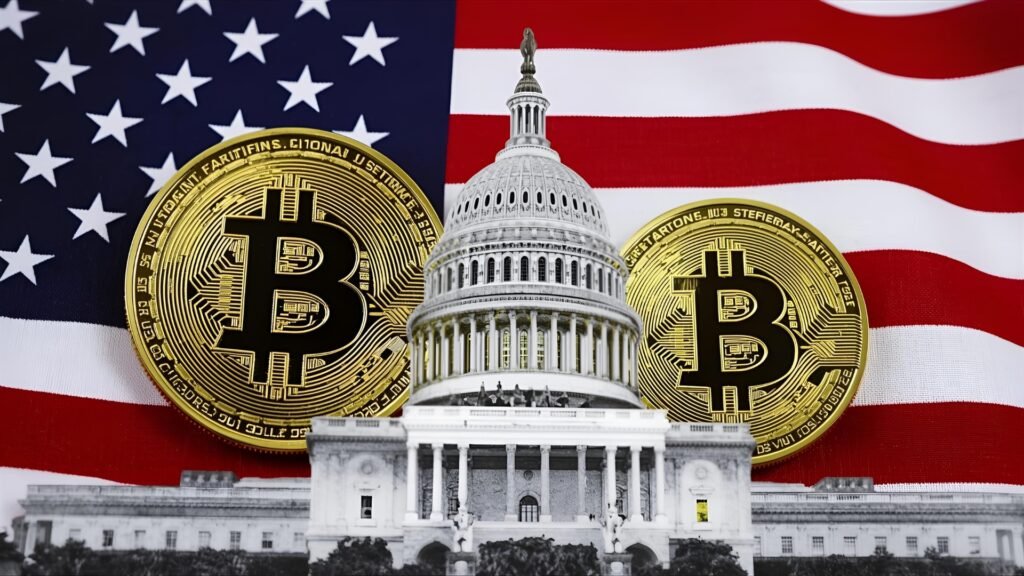The US government’s Bitcoin holdings have become a topic of global fascination. With billions of dollars in digital assets seized from cybercriminals, darknet markets, and financial fraud cases, the question arises — how does the US government transfer $14 billion worth of Bitcoin safely? The answer reveals a complex, secure, and transparent system involving multiple federal agencies, blockchain tracking tools, and specialized cryptocurrency custodians.
This unprecedented level of digital asset management highlights not only the sophistication of US financial oversight but also the evolution of how governments interact with blockchain technology. Understanding this process provides insights into both the future of cryptocurrency regulation and the increasing institutional adoption of digital currencies.
The Origins of the Government’s Bitcoin Holdings
The United States government didn’t buy its billions in Bitcoin—it acquired them. Most of these assets stem from law enforcement seizures involving darknet operations like Silk Road, ransomware attacks, and large-scale crypto frauds. Over time, the Department of Justice (DOJ), the Federal Bureau of Investigation (FBI), and the Internal Revenue Service (IRS) have accumulated and held these digital assets as evidence before liquidating them through auctions or transfers to custodians.
One of the most notable cases occurred in 2013 when the FBI seized 144,000 BTC from Silk Road’s founder, Ross Ulbricht. That seizure alone was worth about $122 million at the time but has since appreciated into billions. The US Marshals Service (USMS) often takes responsibility for managing and liquidating these Bitcoin holdings once the courts finalize forfeitures.
The Agencies Behind the Transfer
The Department of Justice (DOJ)
The DOJ plays the central role in overseeing seized digital assets. It ensures that all transfers comply with federal law and that each movement of Bitcoin aligns with legal judgments. The department works with multiple agencies to handle custody, valuation, and distribution of the assets.
The US Marshals Service (USMS)
The US Marshals Service functions as the operational branch responsible for transferring, storing, and selling cryptocurrency assets. Once the DOJ approves a transfer, the USMS coordinates with licensed cryptocurrency custodians to move the funds safely between digital wallets.
The Internal Revenue Service (IRS)
The IRS Criminal Investigation (IRS-CI) team is instrumental in tracing blockchain transactions during investigations. After the assets are recovered, the IRS often provides technical expertise for secure storage and compliance with financial reporting laws.
The Role of Blockchain in Tracking the Transfers
![]()
Every transfer of Bitcoin made by the US government is publicly visible on the blockchain ledger, which records all transactions transparently. When a $14 billion Bitcoin transfer takes place, blockchain analysts and the crypto community can track wallet movements in real time.
However, identifying the government’s wallets isn’t straightforward. These wallets are often anonymous and fragmented across multiple addresses to reduce risk and maintain confidentiality. Specialized firms such as Chainalysis, Elliptic, and TRM Labs provide forensic support to ensure the integrity of these movements and to prevent any potential theft or mismanagement.
This public transparency ensures that, although the US government may move massive sums of Bitcoin, every transaction remains verifiable on the blockchain — reinforcing trust in government-held digital assets.
How the US Government Stores Its Bitcoin
Before any transfer occurs, storage is a critical concern. The government does not simply hold Bitcoin on an exchange or online wallet. Instead, it utilizes a cold storage system — digital wallets that are not connected to the internet. These wallets are secured in vault-like environments with multi-signature protocols requiring approval from several authorized officials before any Bitcoin can be moved.
Cold wallets are often managed by third-party custodians who specialize in institutional cryptocurrency security. Companies such as Coinbase Custody or Anchorage Digital are examples of firms that may handle such government contracts, ensuring multi-layered encryption and physical security around private keys.
By relying on cold storage solutions, the US government minimizes hacking risks and preserves the integrity of its massive Bitcoin reserves.
The Process of Transferring $14 Billion in Bitcoin
Step 1: Legal Authorization
Before any Bitcoin is transferred, legal authorization must be secured through the Department of Justice. This step ensures the movement aligns with either a court order, a forfeiture judgment, or an asset sale decision.
Step 2: Wallet Verification
Each wallet involved in the transfer undergoes extensive verification to ensure that it’s properly secured and that no private keys have been compromised. Custodians perform multi-party checks before initiating any transfer.
Step 3: Blockchain Transaction Execution
Once verified, the transaction is broadcast to the Bitcoin network. Given the size of the transfer, it may be split into multiple smaller transactions to reduce traceability and avoid market disruption. Blockchain explorers often detect these movements, labeling them as “government-related transfers” when identified.
Step 4: Confirmation and Record-Keeping
After completion, all transfers are confirmed on the blockchain, and detailed records are kept within the DOJ and Treasury databases. These logs serve both auditing and regulatory purposes, ensuring full transparency and accountability.
Why the US Government Transfers Bitcoin

There are several key reasons behind such massive Bitcoin transfers:
Asset Consolidation
The government may consolidate its various seized Bitcoin holdings into fewer, more secure wallets to streamline management. This prevents scattered funds across multiple wallets and enhances operational control.
Liquidation and Auctions
The US Marshals Service periodically conducts Bitcoin auctions, allowing investors to purchase seized cryptocurrency assets. Before these auctions, the Bitcoin must be transferred to designated wallets under the auction system, explaining many of the government’s large movements.
Exchange for Fiat Currency
Sometimes, the government converts a portion of its Bitcoin holdings into US dollars through regulated exchanges to fund law enforcement activities, reimburse victims, or comply with court-ordered financial obligations.
Security Measures and Risk Management
Handling $14 billion worth of Bitcoin demands extreme caution. The government employs a combination of cybersecurity protocols, multi-factor authentication, and zero-trust frameworks to prevent internal and external threats.
To further mitigate risk, transactions are executed under non-public timeframes, minimizing the chances of malicious actors monitoring and exploiting the movement. Moreover, the Office of the Inspector General (OIG) regularly audits these processes to ensure compliance with federal cybersecurity standards.
In addition, multi-signature authorization ensures that no single individual can move funds alone. Every transfer requires joint consent from multiple authorized officials, adding a critical layer of oversight.
How the Market Reacts to Government Bitcoin Transfers
When blockchain analysts detect large Bitcoin wallet movements from government-controlled addresses, the cryptocurrency market often reacts with speculation. Traders might interpret these transfers as signals of an upcoming sale or auction, leading to short-term price fluctuations.
However, not every movement implies liquidation. Many times, the transfers are purely administrative or security-related, such as wallet reorganization or compliance audits. Nonetheless, the psychological impact on the market can be profound, reinforcing the influence of government Bitcoin activity on investor sentiment.
See More: Bitcoin as a strategic asset, Adoption Government Reserves & amp Market Trends
The Future of Government Crypto Management
As cryptocurrencies become more integrated into the global financial system, governments worldwide are evolving their digital asset management strategies. The United States is leading in this regard by establishing protocols that blend transparency, security, and legal compliance.
Experts predict that, in the future, the US government may adopt blockchain-based asset tracking systems or even launch specialized digital asset custodial divisions. With the rise of Central Bank Digital Currencies (CBDCs) and regulatory frameworks like the Digital Asset Anti-Money Laundering Act, the management of seized cryptocurrency assets will only grow more sophisticated.
Moreover, collaboration between the public and private sectors will likely expand, as major exchanges and blockchain analytics firms continue to support federal investigations and asset recovery.
Lessons from the $14 Billion Bitcoin Transfer
The government’s handling of such a monumental sum highlights several vital lessons about digital finance and crypto regulation:
-
Transparency builds trust – The blockchain’s public nature ensures all movements are traceable.
-
Security requires complexity – Multi-layered systems are non-negotiable for protecting high-value assets.
-
Institutional adoption is inevitable – The government’s involvement demonstrates mainstream acceptance of cryptocurrencies.
These principles not only apply to public institutions but also to private investors seeking to manage their digital assets responsibly.
The Global Implications of US Bitcoin Management
The world closely watches how the US government manages its crypto reserves. Other nations, such as the UK, Germany, and South Korea, have begun adopting similar strategies for storing and liquidating seized cryptocurrencies.
By setting a precedent for transparency and lawful management, the United States indirectly promotes global crypto legitimacy. Furthermore, it demonstrates that digital currencies, when managed under legal and technical safeguards, can coexist within traditional financial frameworks.
This evolving approach is shaping international discussions on digital asset regulation, cross-border enforcement, and crypto taxation—influencing how governments worldwide will interact with blockchain technology in the coming decades.
Conclusion
The transfer of $14 billion worth of Bitcoin by the US government is more than just a financial operation—it’s a landmark in the intersection of law enforcement, technology, and finance. This process showcases the meticulous systems in place to safeguard digital assets, comply with federal regulations, and maintain market stability.
Through blockchain transparency, advanced custodial solutions, and multi-agency collaboration, the United States has established a blueprint for responsible cryptocurrency management. As digital assets continue to integrate into the global economy, the government’s role in maintaining trust, security, and accountability will remain pivotal.
FAQs
Q: Why does the US government hold Bitcoin?
The US government holds Bitcoin primarily because it has been seized during criminal investigations involving fraud, darknet markets, or ransomware operations. These assets are later auctioned or liquidated under judicial orders.
Q: Who manages the government’s Bitcoin holdings?
The US Marshals Service, under the supervision of the Department of Justice, manages most of the Bitcoin holdings, ensuring secure storage and lawful disposition.
Q: How does the government ensure Bitcoin transfers are secure?
The government employs cold storage wallets, multi-signature protocols, and blockchain verification to ensure each transfer is protected from cyber threats and unauthorized access.
Q: Do Bitcoin transfers by the government affect the market?
Yes, sometimes large government Bitcoin transfers create short-term volatility in the market due to speculation of liquidation or auctions, though not all movements involve sales.
Q: Will governments continue to hold cryptocurrencies?
As digital currencies gain mainstream adoption, governments are expected to continue holding and managing them—either through seizures, regulatory reserves, or future CBDC integrations

















